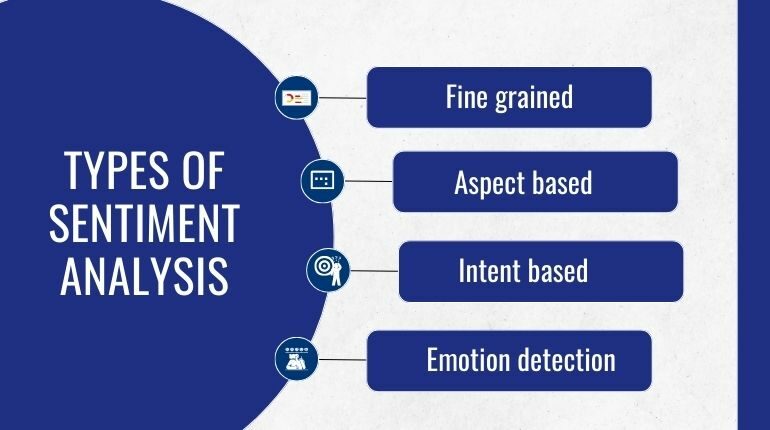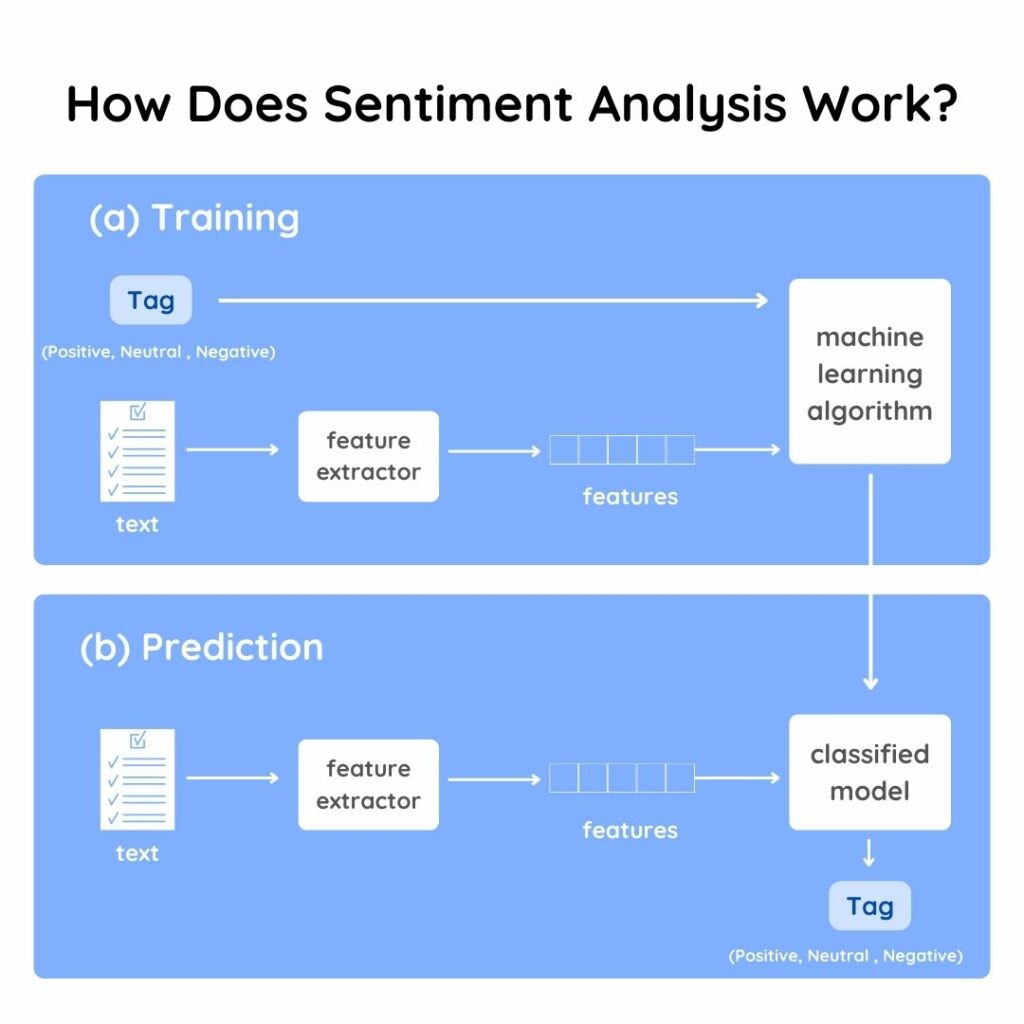
Sentiment analysis is about understanding the emotions in the text. People use it to determine how others feel in their feedback, surveys, or product reviews. Beyond this, it is invaluable for essential tasks such as monitoring social media, reputation management, and enhancing the overall customer experience.
Consider product reviews as an example. By analyzing a large number of these reviews, you can figure out if your prices and product features are satisfying your customers.
In this guide, we’ll break down sentiment analysis step by step, showing you how it’s applied in the business world and highlighting its valuable strengths.
Fast forward to the section you're most interested in:
- What is sentiment analysis?
- Why is sentiment analysis important for business?
- Types of sentiment analysis
- What are sentiment analysis use cases?
- How does sentiment analysis work?
- Benefits of sentiment analysis
- What are the challenges in sentiment analysis?
- How does Powermetrics help with sentiment analysis?
- Conclusion
What is sentiment analysis?
Sentiment analysis, often called opinion mining, is a natural language processing (NLP) technique used to identify and evaluate the emotions, opinions, or attitudes expressed in written or spoken text. It aims to classify the text as positive, negative, or neutral and sometimes assign a specific sentiment score.
This is commonly used to gain insights from large volumes of text data such as social media comments and customer reviews, which allows businesses and organizations to understand public perception, customer feedback, and trends and make data-driven decisions.
Sentiment analysis methods:
Sentiment analysis employs various methods to gauge emotions and opinions in text data. These methods range from simple lexicon-based approaches to more sophisticated machine-learning techniques. Lexicon-based methods rely on sentiment dictionaries containing words and their associated sentiments, assigning scores to words and aggregating them to determine overall sentiment.
Machine learning methods involve training models on labeled data, enabling them to classify text into positive, negative, or neutral sentiments based on learned patterns and features.
Additionally, hybrid approaches combining lexicon-based and machine-learning methods are utilized for nuanced sentiment analysis, ensuring accurate interpretation of sentiments expressed in diverse contexts within the text.
What is the purpose of sentiment analysis?
Sentiment analysis is to automatically understand and extract sentiments, emotions, or opinions expressed within textual data. This analysis helps gauge prevailing attitudes towards specific subjects, products, services, individuals, or events, whether positive, negative, or neutral.
The key objectives of sentiment analysis include:
- Understanding Public Opinion: It allows businesses, organizations, and individuals to comprehend public sentiment towards their brand, service, or product by analyzing social media posts, reviews, and customer feedback.
- Customer Insights: Sentiment analysis helps in mining customer opinions and feedback to identify strengths, weaknesses, and areas of improvement. This insight aids in making informed decisions to enhance products/services or customer experiences.
- Market Research: It provides valuable insights into market trends, consumer preferences, and emerging patterns, aiding companies in adjusting marketing strategies and product development to meet customer needs effectively.
- Reputation Management: Sentiment analysis enables proactive brand reputation management by identifying and addressing negative sentiment or potential crises early, thereby maintaining a positive brand image.
- Risk Assessment: In finance, sentiment analysis is used to assess market sentiment and predict potential risks by analyzing news articles, social media, and other textual data to understand market mood and trends.
- Policy and Governance: It helps policymakers and governments understand public opinion on policies, initiatives, or current affairs, aiding in making more informed decisions.
Why is sentiment analysis important for business?
Sentiment analysis is valuable for organizations to understand how customers view their products and brands. Nowadays, customer feedback often comes from various sources like Amazon reviews or social media posts.
However, it’s impractical for organizations to search the internet and analyze all this data manually. That’s where sentiment analysis algorithms come in. They automate this process, providing real-time feedback.
Organizations use this feedback to enhance their products, services, and customer experience. By proactively using sentiment analysis in product development, they can boost customer loyalty and retention.
Types of sentiment analysis
Businesses employ various types of sentiment analysis to understand better and connect with their customers. Here are the types:
Fine-grained sentiment analysis:
Fine-grained sentiment analysis means taking a closer look at emotions. Instead of just saying something is good or bad, we use a scale from 0 to 100, like a 5-star rating where 5 is good, 2 is not so good, and 3 is in the middle. This helps us understand feelings more precisely.
Aspect-based sentiment analysis:
Aspect-based sentiment analysis focuses on specific parts of something, like a product or service. For example, we might look at different things in a laptop, such as how it sounds, its graphics, keyboard, and touchpad. We understand how people feel about each aspect by connecting what people say with words about these parts.

Intent-based sentiment analysis:
Intent-based analysis helps us understand what people want or plan to do. In marketing, we use it to figure out where customers are in their decision-making. We know they’re interested in buying if they talk about discounts, deals, or reviews.
Emotional detection analysis:
Emotional detection goes beyond polarity to detect simple feelings like good or bad. It tries to understand deeper emotions, like happiness, anger, sadness, or regret, based on people’s words. This helps us get a better sense of how people are feeling.
What are sentiment analysis use cases?
Sentiment analysis tools play a vital role in a wide range of industries, serving diverse purposes:
- Customer Feedback Analysis: Listening to what customers say in reviews and surveys to improve products and services.
- Brand Reputation Management: Keeping a company’s good image by paying attention to what people say online.
- Product Development: Using people’s feedback to make products and features better.
- Market Research: Making smart decisions by understanding what people think and what’s popular.
- Social Media Monitoring: Paying attention to what people say about a brand or product on social sites.
- Politics and Public Opinion Analysis: Reading people’s thoughts about politicians, policies, and essential issues to make better decisions.
- Customer Service Improvement: Finding ways to make customer service excellent.
- Financial Market Analysis: Deciding where to invest money by seeing how people feel about the financial world.
- Competitive Analysis: Understanding how people feel about other companies and changing plans to be the best.
How does sentiment analysis use NLP?
NLP sentiment analysis is a technique to discern and understand the emotions, opinions, and attitudes expressed within text data. NLP, a field of artificial intelligence, equips machines with the ability to interpret and derive meaning from human language.
Uses of NLP sentiment analysis:
- Text Preprocessing: NLP techniques like tokenization (breaking text into smaller units like words or phrases), stemming (reducing words to their base or root form), and lemmatization (transforming words to their dictionary form) help in preparing text for analysis.
- Feature Extraction: NLP algorithms extract features from the text, such as words, phrases, or contextual information, that indicate sentiment. These features can include n-grams (sequences of adjacent words), word frequencies, or syntactic structures.
- Sentiment Classification: NLP-based machine learning models are trained to classify text into different sentiment categories like positive, negative, or neutral. Techniques such as supervised learning (using labeled data), deep learning (neural networks), or lexicon-based approaches (using sentiment dictionaries) are employed for this purpose.
- Context Understanding: NLP helps understand the context in which words or phrases are used, allowing models to differentiate between sentiments expressed in various contexts. For instance, the same word might convey different sentiments in different contexts.
- Sentiment Analysis Applications: NLP-powered sentiment analysis finds applications in various domains like social media monitoring, customer feedback analysis, market research, and brand reputation management. It helps understand public opinion, identify trends, and make data-driven decisions.
- Improving Accuracy: NLP models are continuously refined and improved using fine-tuning, transfer learning, or domain-specific knowledge to enhance sentiment analysis accuracy and adaptability to diverse text data sources.
How does sentiment analysis work?
Sentiment analysis harnesses the power of machine learning models to conduct a detailed examination of human language. These models are skillfully designed to discern the prevailing sentiment within a text, categorizing it as positive, negative, or neutral.

The sentiment analysis process includes these steps:
Data Collection: The initial step in sentiment analysis is to gather the text data you want to analyze. This data can come from various sources such as social media posts, customer reviews, news articles, or any textual content where sentiment is relevant.
Text Preprocessing: Before analysis, the text data needs to be preprocessed. This includes tasks such as removing punctuation, tokenization (breaking the text into words or phrases), lowercasing, and eliminating stop words (common words like “the,” “is,” “and” that don’t carry much sentiment).
Sentiment Lexicons: Sentiment analysis depends on sentiment lexicons or dictionaries, which include words and phrases associated with either positive or negative sentiments. Each word or expression is assigned a sentiment score; for instance, ‘happy’ may receive a positive score, whereas ‘disappointing’ may be assigned a negative score.
Sentiment Classification: After analyzing the text, sentiment analysis systems typically classify the sentiment into several categories, such as positive, negative, neutral, or even on a finer-grained scale (e.g., very positive, slightly negative). The classification is based on the overall sentiment score calculated in the previous step.
Output and Visualization: The results of the sentiment analysis can be visualized in various forms, such as charts, graphs, or simply as a sentiment label associated with the text.
Empower Your Business Decisions with Our Sentiment Analysis Dashboard
Benefits of sentiment analysis
Sentiment analysis offers a wide range of advantages across various fields. These benefits include:
- Efficiently collects extensive data from various sources.
- Keeps you updated with real-time customer feedback and sentiments.
- It helps in enhancing products, services, and customer experiences.
- Quickly identifies issues with products and services.
- It equips your support team to respond better and faster.
- Measures the effectiveness of customer support.
- Provides smart customer service by directing customers to the right information.
- Offers insights for improving marketing strategies.
- Establishes clear criteria for understanding feelings.
- It helps in spotting and addressing issues early.
- Frees up your team’s time for other important tasks.
- Encourages caring and empathetic customer service.
What are the challenges in sentiment analysis?
Even with the advancements in natural language processing (NLP) technologies technology, machines still have a hard time understanding all the little details in how people communicate, as you’ll see below:
Subjectivity & Tone: Text often carries personal opinions and tones that can be difficult to understand accurately. For example, a positive sentence may hide sarcasm or criticism.
Context & Polarity: To grasp sentiment, it’s crucial to consider the context in which words are used and whether they convey positivity, negativity, or neutrality. A word’s sentiment can change based on the situation.
Irony & Sarcasm: Irony and sarcasm involve using words to mean the opposite of what they say. Detecting these forms of expression can be tricky because it requires recognizing when words don’t match the intended sentiment.
Emojis: Emojis are a big part of modern communication and can express sentiment. However, their meanings are sometimes precise and may not match the words around them.
Defining Neutral: Determining what counts as “neutral” sentiment can be challenging because it’s not always clear when something is positive or negative. The line between neutrality and slight positivity or negativity can vary depending on the context.
How does Powermetrics help with sentiment analysis?
Powermetrics is a business intelligence platform that enables companies to create interactive dashboards and perform ETL (Extract, Transform, Load) operations to analyze and visualize their data. While Powermetrics primarily focuses on data visualization and analysis, it can be used to enhance sentiment analysis in the following ways:
Data Integration: ETL processes are crucial for sentiment analysis as they allow organizations to gather and integrate data from various sources. Powermetrics’ ETL capabilities can help your company collect text data from social media platforms, customer reviews, or other relevant sources and integrate it into a centralized data repository for sentiment analysis.
Data Transformation: Sentiment analysis often requires preprocessing and text analysis. Powermetrics can assist in transforming and cleaning the text data, which is a crucial step before applying sentiment analysis algorithms.
Data Visualization: Powermetrics allows you to create interactive dashboards that display the results of your sentiment analysis. These dashboards can include sentiment scores, sentiment trends over time, word clouds highlighting key sentiment-driving words, and sentiment breakdowns by source or topic. Visualizations help users easily interpret the sentiment insights and make data-driven decisions.
Customization: Powermetrics enables you to tailor your customer sentiment dashboard to specific customer needs and business requirements.
Real-Time Analysis: Powermetrics can be used to create real-time or near-real-time dashboards. This is particularly valuable for sentiment analysis when companies want to monitor sentiment as it evolves over time. Users can view sentiment trends as they happen and respond to changes in public opinion promptly.
User-Friendly Interface: Powermetrics provides a user-friendly interface for creating and customizing dashboards. This empowers non-technical users within your organization to access sentiment analysis results and gain insights without the need for extensive technical expertise. This democratizes data access and analysis across departments.
Conclusion
Sentiment analysis harnesses the power of machine learning and natural language processing (NLP) to categorize text as negative, positive, or neutral.
We hope that this guide has provided you with a comprehensive understanding of sentiment analysis and its extensive applications in the business world. Its use cases are diverse, from monitoring brand reputation to conducting market research and enhancing human resources practices.
Sentiment analysis empowers companies to delve deeper into insights, boost their competitiveness, and better understand their customer base.
In the ever-evolving landscape of sentiment analysis, keeping an eye on the latest trends is necessary. By staying informed, companies can continue to harness the full potential of this valuable tool.
People Ask Questions
01 What is a sentiment analysis tool?
A sentiment analysis tool is software that uses AI to analyze text and quickly determine whether people have positive, negative, or neutral feelings about a brand, product, or service.
02 What are sentiment analysis examples?
Sentiment analysis uses AI to assess whether text expresses positive, negative, or neutral emotions. Examples include “I love this product” (positive), “Terrible customer service” (negative), and “The weather is mild” (neutral).
03 What are the three important components of sentiment analysis?
Sentiment analysis involves assessing three main aspects: emotions, trends, and value.
04 How is AI used in sentiment analysis?
AI plays a crucial role in sentiment analysis by using algorithms to automatically analyze vast amounts of customer feedback and spot patterns that reveal whether the sentiment is positive or negative.
Recent Posts

